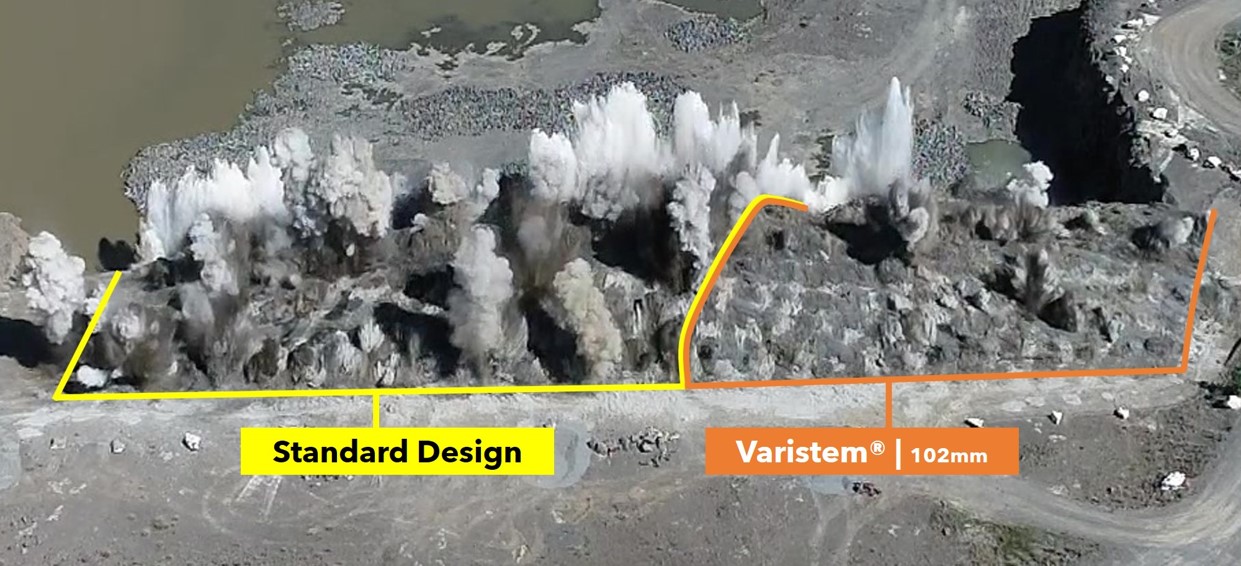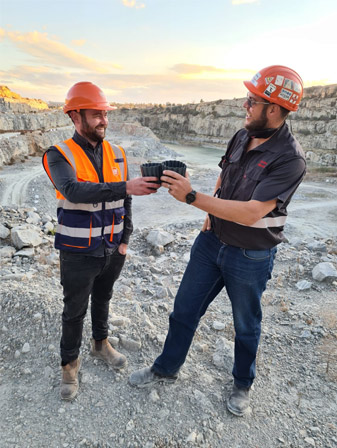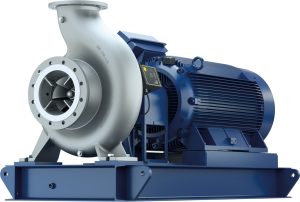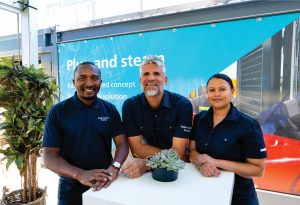Blasting is an important part of the quarrying process. To achieve the best blast result, good stemming practices are necessary. During blasting, explains Eugene Preis, MD of ERG Industrial, stemming plays a key role in confining the explosives and making effective utilisation of blasting energy. By Munesu Shoko.
There are various parameters that affect the performance of a blast, such as burden, spacing, type of explosive and stemming. Commenting on the significance of stemming, Preis tells Quarrying Africa that in blasting, energy follows the path of least resistance, and in most cases, that’s right up the blast hole. Good stemming thus creates more resistance at the top of the blast hole and directs the energy to where it’s needed – the rock mass.
“The knock-on effect of better energy containment is significant. On the health and safety side, there is a reduction in flyrock, noise and airblast. From a productivity point of view, there is an improvement in fragmentation. Good stemming is thus a small principle of creating better resistance in the blast hole which leads to a range of benefits,” explains Preis.

Stemming material
There are different types of stemming materials used in blasting, including crushed aggregate, drill chippings and clay, among others.
Because they produce aggregate, quarries have traditionally used crushed aggregate as stemming material. However, for most mines, it’s not economically feasible to use crushed aggregate, thus operations tend to use drill chippings or cuttings.
According to Preis, operations that use aggregate for stemming are leaders of the pack. “Crushed aggregate has great interlocking properties because of the sizing of the stone. If you apply pressure to a column of aggregate, you get interlocking and that in turn creates a counter force against the pressure being exerted,” he says.
However, he adds, the downside of using aggregate alone is that because of the particle size, there is room for contamination of the upper part of the explosives. The weight and size of the aggregate can sink into a portion of the explosives, which reduces the effectiveness of the bang. This in most cases results in oversize in the upper layer of the block or the capping layer.
“Additionally, because there are so many spaces and voids between the rock particles, there is no effective containment of explosive gases and shockwave. However, it should be noted that operations that are already using aggregate are counted among those ahead of the pack in terms of their stemming practices,” says Preis.

Enter stemming plugs
Typically, the loss of explosive energy through stemming ejection reduces the performance of the blast. The core principle behind stemming plugs is to improve the effectiveness of stemming material in the blasthole. As a result, this helps better contain the explosives energy within the rock mass and yield a more controlled and efficient blast.
“A stemming plug is not a standalone solution; it works in conjunction with stemming material, whether aggregate or drill chippings, to help contain energy for much longer,” says Preis. “As soon as the force is exerted onto the stemming plug, it engages with stemming material and compacts it, forcing itself into any voids between the stemming material and the sides of the hole. As a result, there is better retention of the shockwave gases within the rock mass,” explains Preis.
Key benefits
Commenting on some of the key benefits of stemming plugs, Preis says there are several knock-on effects of better energy containment. For quarries, one of the biggest challenges is their proximity to communities and infrastructure. In line with the requirements of Regulation 4.16(2) of the Mining Health and Safety Act’s Explosives Regulations of 2018, quarries need to acquire a licence to blast within 500 m of structures.
“Because quarries are by their nature close to communities and existing infrastructure, they need to find ways to control flyrock and keep their noise and airblast down. Using stemming plugs reduces the likelihood of stemming ejection and flyrock. As a result, most of our clients in the quarrying space use our Varistem stemming plugs for that reason,” says Preis.
On the productivity side of things, due to their better energy containment properties, stemming plugs help improve fragmentation and reduce oversize material in blasts. The benefits of good fragmentation are well documented, says Preis.
“Firstly, good fragmentation eliminates the need for costly secondary blasting or mechanical breaking of oversize material. Secondly, there is a positive impact on downstream processes such as load and haul. Crusher throughput also increases due to improved overall particle size distribution,” he says.
A key trend in the quarrying sector, says Preis, is that there is almost a trade-off between productivity and health & safety, and in most cases the later wins. Quarries are overly cautious when it comes to stemming heights in their blast designs. They therefore design their blasts to produce no flyrock, but in the end they get oversize in the top stemming layer.
“By incorporating a stemming plug such as Varistem in their blast designs, quarries can reduce their stemming heights, for example, by leaving an air deck. By using this solution, they can keep flyrock down, while at the same time dealing with the oversize problem. The system therefore offers great value on both fronts – productivity and health & safety,” he says.

Changing perception
Of the various products that have come to market to improve blast performance, flyrock control and downstream productivity, stemming plugs have been looked upon with some scepticism. However, ERG Industrial has seen renewed interest in the technology following its 2019 introduction of the Varistem range from United States company, MOCAP.
“To say that the perception towards stemming plugs was negative when we started in 2019 is an understatement,” says Preis. “The core reason is that in the past there were some suppliers who were not able to deliver on their promises. The only way to quell this perception was to prove that our product works. We started doing field testing at customer operations, using drones and monitors to collect data to scientifically show that the product added real value.”
With mines and quarries fast realising the massive benefits offered by this technology, Preis tells Quarrying Africa that the rate of adoption has increased tenfold in the past two years. Central to that perception change is ERG Industrial’s ability to prove the capabilities of the technology through scientific evidence.
Watch Eugene Preis discussing about the impact of good stemming in blast outcomes.
The future
Based on the current shift in attitude towards stemming plugs, Preis foresees a rapid increase in adoption in future. “We have had more mining and quarrying companies coming on board in the past six months than we have seen in the past two years,” he says.
Preis says there is a better understanding that drill and blast, as the very first process in the quarrying and mining value chain, has a significant bearing on the performance of all other downstream processes. By making a small change in outcomes at the beginning of the value chain, operations can see exponential gains downstream.
“From a macro perspective, if all mining and quarrying operations were able to improve their blast outcomes by 5%, for instance, there would be an incredible knock-on effect on their bottom line, and effectively on the industry’s contribution to the economy at large,” concludes Preis.





